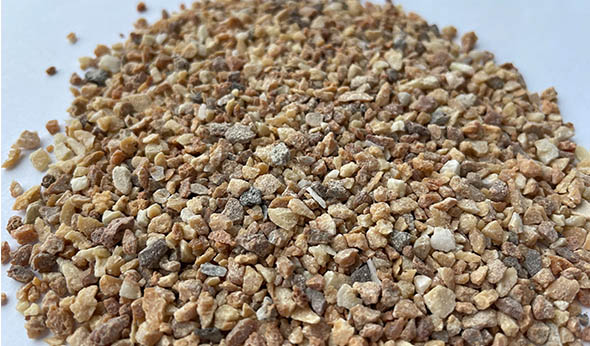Your Position: Home - Minerals & Metallurgy - The Difference Between Dead-Burned Magnesite and Fused Magnesite with Large Crystals
Magnesium oxide is an alkaline oxide with typical properties of alkaline oxides, belonging to the category of refractory materials. It is a white powder (pale yellow if containing magnesium nitride), odorless, tasteless, and non-toxic, characteristic of alkaline earth metal oxides.
Dead-burned magnesite is mainly produced from 46% content magnesite ore, which is calcined layer by layer with coal in an iron sheet kiln at temperatures ranging from 1600C to 1800C. Its primary component is magnesium oxide, obtained by selecting natural high-grade magnesite ore, and then subjected to flotation purification, light calcination, fine grinding, high-pressure ball pressing, and high-temperature oil vertical kiln calcination. The production process involves converting two tons of ore into one ton of dead-burned magnesite. The resulting product is divided into three grades: 1) Pre-kiln dead-burned magnesite, 2) Under-burned dead-burned magnesite, and 3) Large block dead-burned magnesite. The typical color of dead-burned magnesite is a deep reddish-brown, and it is characterized by its high refractoriness.

Applications of DBM Magnesite: When mixed with magnesium chloride water solution and a small amount of talcum powder, quartz sand, and glass fibers, it can be formed into refractory materials with a refractoriness of up to 400C and even 1700C. Dead-burned magnesite exhibits good sintering properties, uniform chemical composition, and stable quality. It is used in the production of magnesia bricks, magnesia-alumina bricks, magnesia-chrome bricks, ramming materials, castables, dry mix materials, coatings, furnace patching materials, asphalt, casting, fireproof and insulation materials, welding flux additives, electric steelmaking furnaces, heating furnaces, rotary kilns, steel refining, electric furnace bottoms, and ramming furnace linings.
Fused magnesite with large crystals is primarily produced using magnesium oxide with a content of over 90% and particles ranging from 0 to 3 microns, melted in an electric arc furnace. This product is characterized by high purity, large crystal grains, dense structure, strong slag resistance, and good thermal shock stability. It is an excellent high-temperature electrical insulation material and an important raw material for manufacturing high-grade magnesia bricks, magnesia-carbon bricks, and unshaped refractory materials. It finds wide applications in metallurgy, chemical industry, defense, research, aerospace, and household electrical components.
Characteristics of fused magnesite with large crystals: High purity, large crystal grains, high melting point, dense structure, good thermal shock stability, excellent high-temperature flexural strength, good slag resistance, and corrosion resistance. It also has strong thermal conductivity and high insulation properties.
Applications of fused magnesite with large crystals: It is used as a refractory lining material for steelmaking furnaces, a high-quality alkaline refractory raw material for manufacturing refractory bricks and unshaped refractory materials. It can also be used as filler for the production of thermocouples and thermal insulation materials (for household appliances, etc.). Additionally, it is utilized in ceramic materials and sintering aids, as well as in metallurgy, building materials, chemical industry, defense, medical equipment, and more.
205
0
0
Comments
All Comments (0)